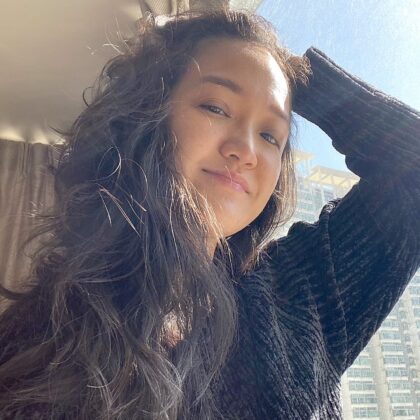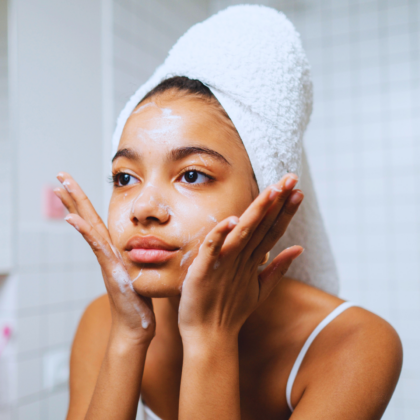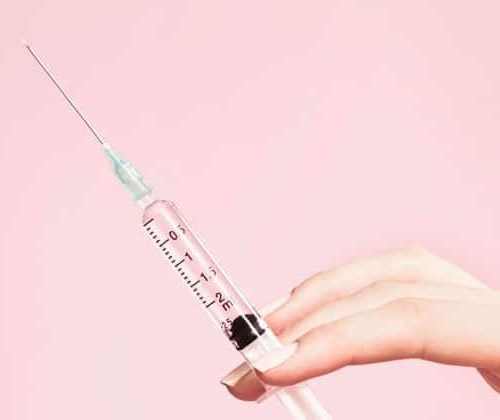Considering a facial tune-up? Get the lowdown on this aesthetic procedure.
As long as I can remember, I’ve had dark circles. Even as a child, the area under my deep-set eyes was “sunken in,” which made me look constantly tired. Worse still, as I approached my mid-20s, I noticed that the hollow area extended downwards to the top of my cheeks, making them look depressed instead of plump and full. Since my trusty concealers could only work so much magic, I decided to get a professional diagnosis from a doctor a few weeks after my 25th birthday. She explained that I had tear troughs: grooves that start at the inner corner of the eyes and travel down to the cheeks. Due to the natural loss of volume caused by collagen breakdown, the lines appeared deeper as I aged.
I also learnt that this loss of volume is the villain behind other common skin woes such as sagging and the emergence of fine lines and wrinkles. My doctor’s recommendation: dermal fillers. When correctly injected into the skin, dermal fillers basically act as volumisers that fill up the sunken areas and fine lines from within.
In addition, they can also be used to add definition to features. For example, fillers can help to heighten a low nose bridge, create the appearance of higher cheekbones, or turn a “flat” chin into a V-shaped one. Or, you could get fillers in a variety of different places around your face to mimic the results of a mild facelift!
I decided to take it slow and settled for hyaluronic acid-based fillers to “plump” up my tear trough area. The results I noticed almost immediately were fuller-looking cheeks that made me looking more youthful, and eye circles that appeared lighter and much less obvious. I loved that the results were instant, while being subtle and natural-looking at the same time.
I did experience some soreness and swelling around my upper cheek area for three to four days, but this may vary from person to person. Due to my darker complexion, I barely noticed any bruising. One thing worth mentioning: you must keep your eyes open during tear trough injections (blinking is allowed), which is a relatively squeamish experience if you’re trying fillers for the first time (or if you’re scared of needles!). That being said, the discomfort I felt during the injections was surprisingly bearably, thanks to the numbing cream used beforehand.
All things considered, the treatment was well worth it for me, given that the results lasted for about a year (again, this varies from person to person). In fact, I was so thrilled with the results that I was more than happy to get my laugh lines filled in a few months after my initial treatment.
If you’re thinking of exploring dermal fillers for your skin concerns, here’s everything you need to know before taking the plunge.
#1 Most common filler types
The two most common types of fillers are hyaluronic acid fillers and synthetic fillers. The former is used to plump up fine lines and leaves skin looking smooth and supple. The results can last from six months to a year. The latter, synthetic fillers, are made using substances that are not naturally present in the body, like Poly-L-lactic acid or Calcium Hydroxylapatite. These fillers can last one to two years.
Poly-L-lactic acid fillers help to stimulate collagen production and require about three to four spaced-out treatments for optimal results, while Calcium Hydroxylapatite fillers are normally used to fill in deeper lines and wrinkles.
#2 Risks
Although fillers are largely considered to be suitable for most skin types, every aesthetic procedure carries a risk of an allergic reaction. In some cases – when injections may not have been administered correctly – patients can also experience tiny bumps under their skin, or a bluish skin discoloration at the injection site, known as the Tyndall Effect. These side effects can either be temporary or permanent. Taking this into consideration, we’d recommend only getting filler treatments from board-certified, experienced dermatologists in a medical setting.
#3 Consultation
Your doctor will begin by assessing your facial features before recommending the suitable type of fillers and their placement. At this point, your doctor should also let you know about any potential risks, so feel free to ask as many questions as you need, before deciding to go ahead with the treatment. This is also a great time to get a quote for the price of your treatment. Once you’re ready to go, your face will be cleansed thoroughly (try to avoid wearing heavy makeup to your appointment) and a topical numbing cream will be applied on the injection site. The whole process of cleansing and numbing can take about 30 to 45 minutes.
After the numbing process, your doctor will wipe off the cream and begin injecting. Some patients still feel some discomfort during this process, despite the numbing cream. You can expect to feel a pinprick-like sensation when the injection is made, along with some pressure and discomfort underneath your skin when the filler itself is being injected. Do note that there are some areas that are more sensitive than others, including the sides of the mouth (where smile lines occur), the lips and the tip of the nose, but this can vary depending on each patient’s pain tolerance.
#4 When to book your appointment
Right after your filler treatment, it’s completely normal to experience swelling, soreness, and even slightly bruising at the injection site, although some patients may not experience all three. These side effects are temporary and should gradually wear off within one to three weeks. If you’re got a big event coming up, it’s best to get your treatment done a month in advance, just to be safe! Your doctor should also ask you to return for a review about two weeks after the treatment, so make sure you leave some space in your schedule for that.
#5 Maintaining your results
You’ll be advised to refrain from intense exercise and facial massages at least two weeks after the treatment, as these can affect the metabolism and placement of your fillers. To make your fillers last longer, you should also avoid sun tanning or spending too much time in the sauna, as high heat levels can speed up their metabolism. Last but not least, wear sunscreen daily to preserve your fillers (and to slow down other signs of aging!)
(Note: The price of fillers typically start from about $4,800 per vial (the number of vials used will depend on the size of the area that needs to be treated; your doctor can give you an estimate prior to your treatment.)
*Disclaimer: Before committing to any aesthetic procedure, you need to sit down with a medical professional to ascertain which treatments are best suited for your interests. This personal review does not represent a professional diagnosis.





 Eat & Drink
Eat & Drink



 Travel
Travel


 Style
Style


 Beauty
Beauty



 Health & Wellness
Health & Wellness



 Home & Decor
Home & Decor


 Lifestyle
Lifestyle
 Weddings
Weddings





